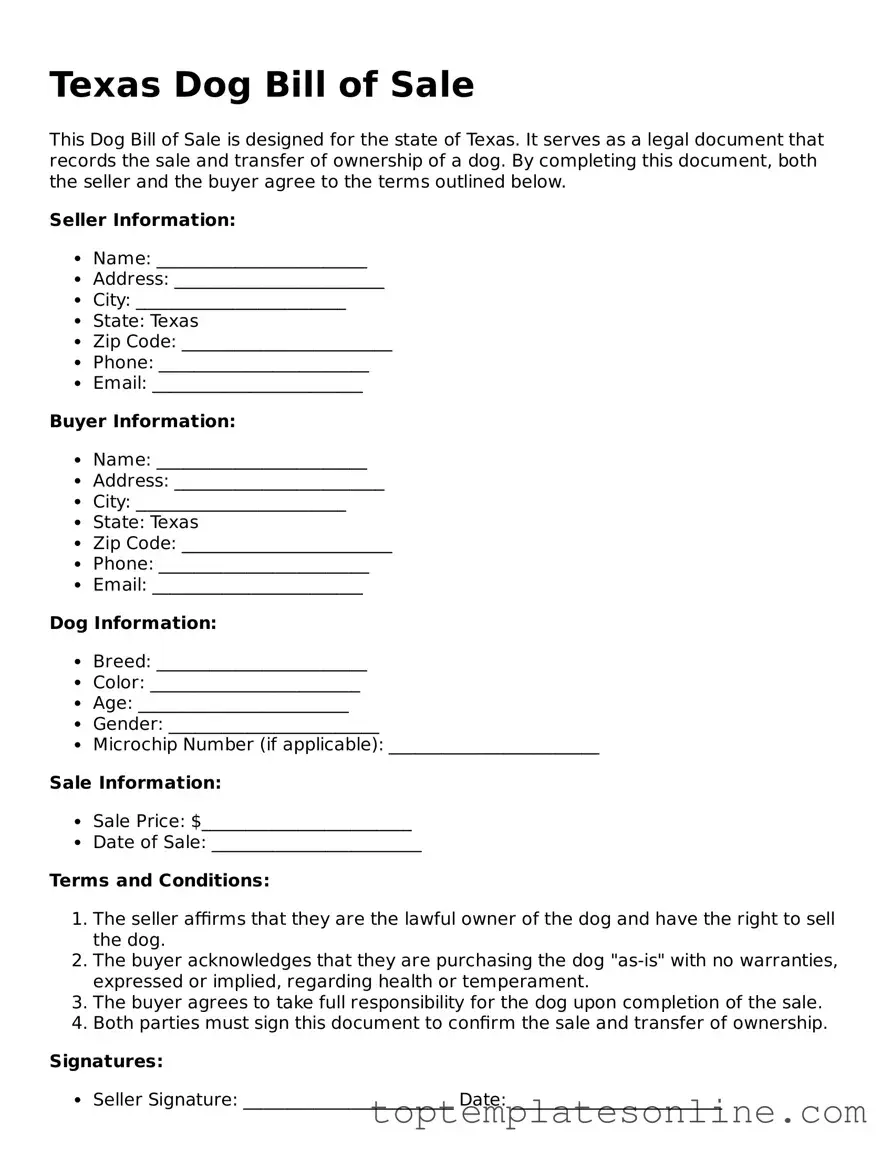Blank Dog Bill of Sale Template for Texas State
The Texas Dog Bill of Sale form serves as a legal document that facilitates the transfer of ownership of a dog from one individual to another. This form outlines essential details, including the identification of the dog, the seller, and the buyer, ensuring clarity in the transaction. By using this form, parties can protect their rights and responsibilities regarding the animal being sold.
Customize Dog Bill of Sale Here
